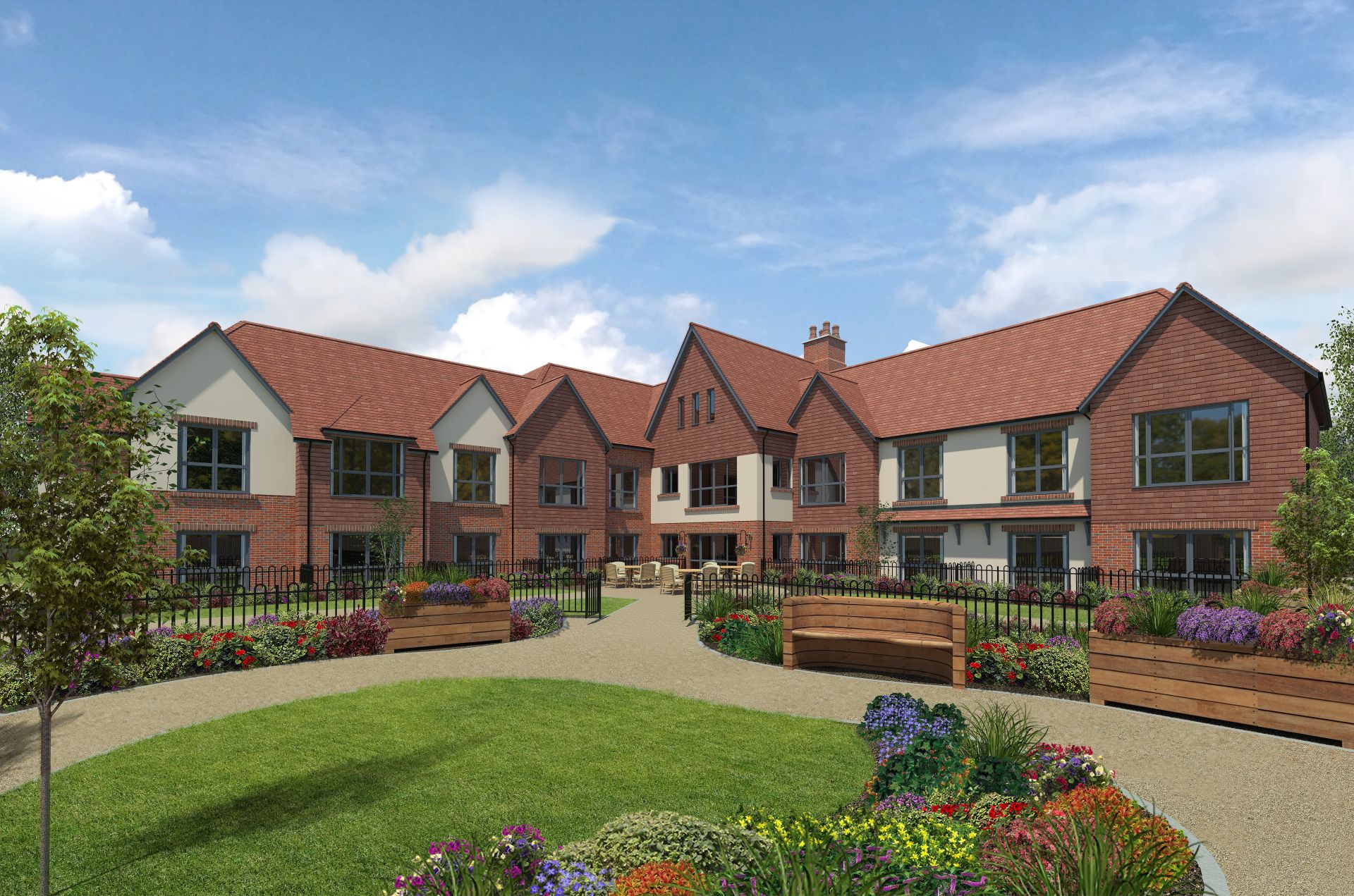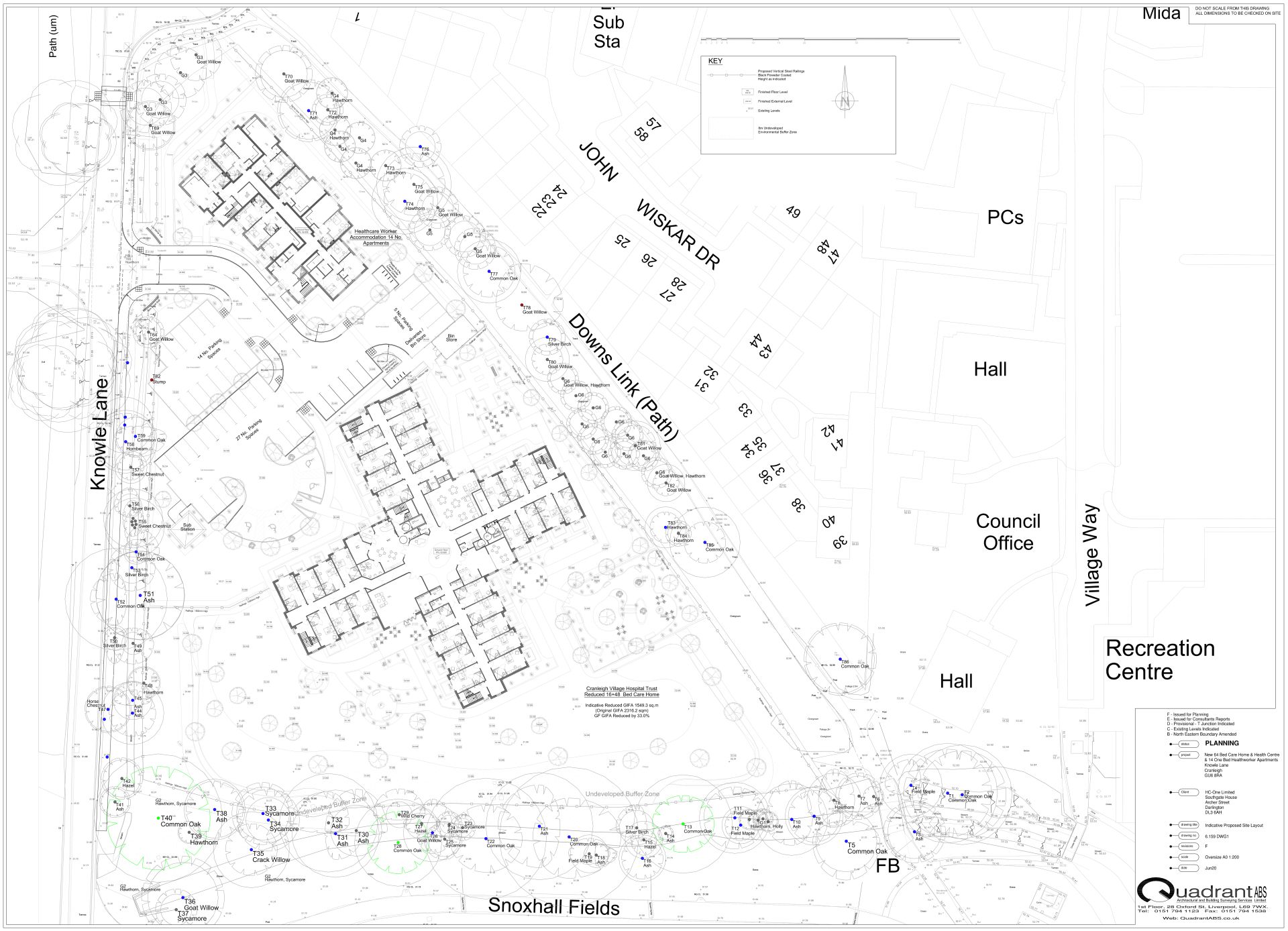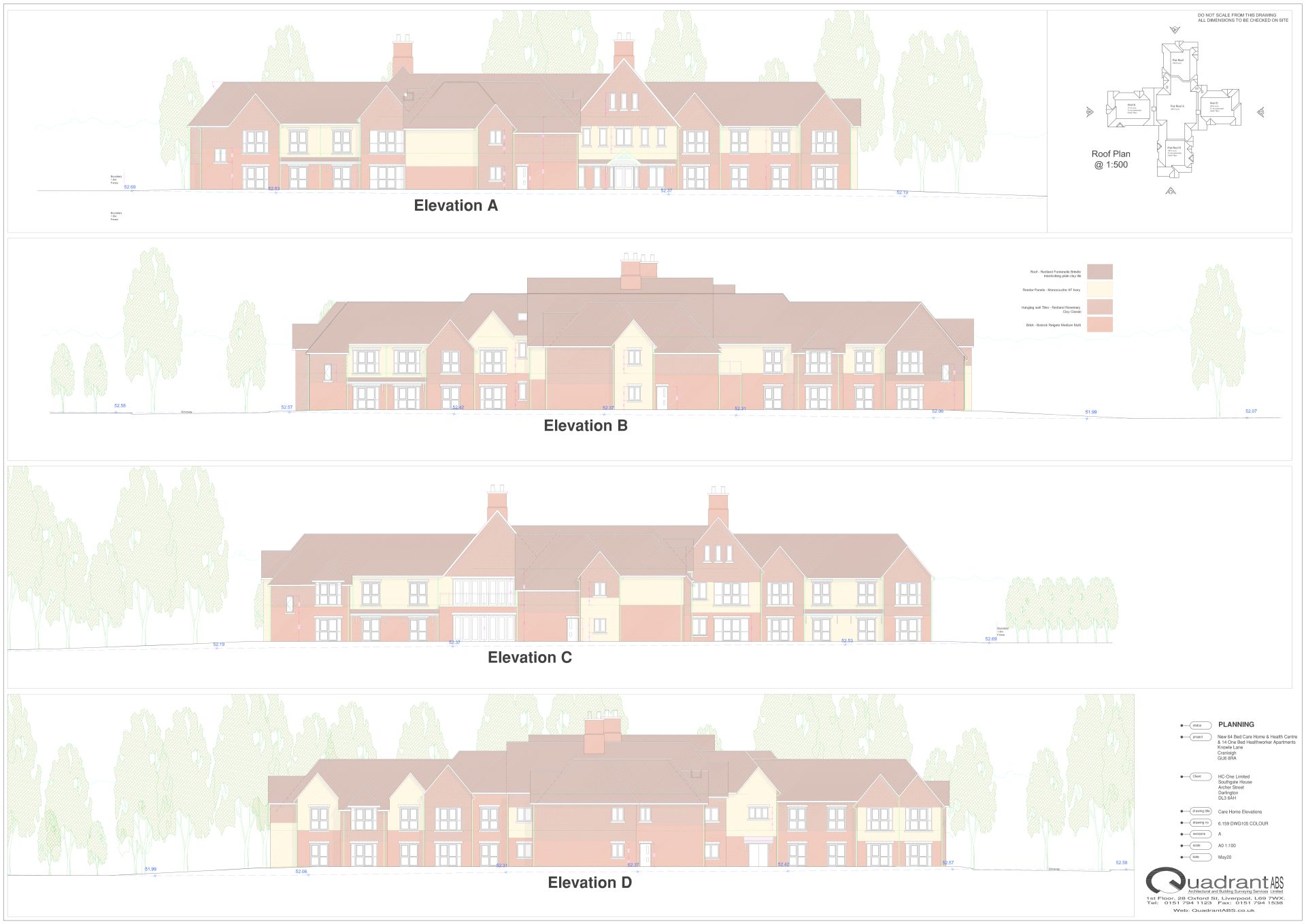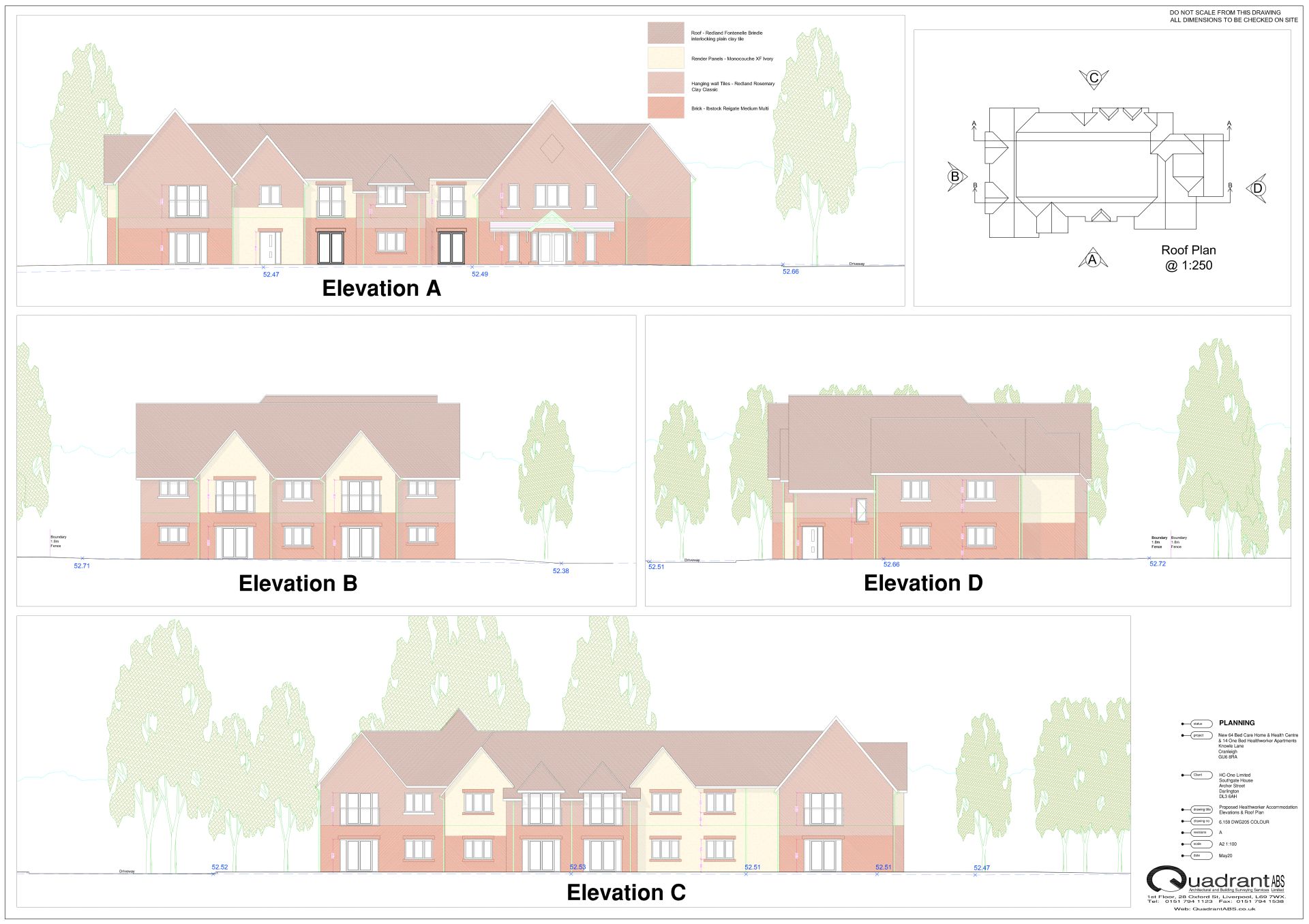Q: Cranleigh already has two excellent Nursing Homes (Knowle Park and Cedar Court) both of which have expanded in recent years. Can we be confident that this 64-bed care home will operate at full capacity as it will need to?
A: The demand analysis, previously completed, would indicate there is a sufficient demand for this care home in coming years. There remains evidence of older families and couples moving to Surrey to be nearer to the grandchildren, and then as they age, they then require residential or nursing care. (Giles Mahoney, Director of the Integrated Care Partnership)
HC-One has carried out a market research exercise, which shows much higher levels of demand than are being satisfied. The commercial risk of demand falling is HC-One’s alone. The arrangements with regard to the Community Beds are contained in a Block Contract with the ICP. This is a stand-alone arrangement and will be subject to the standard procurement requirements of the ICP. (CVHT)
Q: If HC-One is sold to a new owner or bought by another company, can CVHT guarantee that the existing arrangements will continue in perpetuity?
A: The arrangements between CVHT and HC-One will be secured by covenants in a lease which is registered against the land title. If HC-One is sold, then the purchaser has to abide by the terms of the lease. CVHT retains the freehold of the land and no purchaser will want to breach the covenants in the lease and thus face the possibility of having the lease terminated and the Care Home handed over to CVHT. Lastly, the obligations are also secured in a Section 106 agreement between CVHT, Waverley Borough Council and HC-One and these obligations specifically operate in perpetuity.
Q: Will CVHT be involved in the decision making process when it comes to allocating the beds to local patients?
Surrey County Council (SCC) are keen to have the option to place those they need to fund in a good quality care home setting, which the CVHT/HC-One community beds would provide, so this will be funded by SCC. The Integrated Care Partnership – the ICP (Made up SCC, CCG, RSCH and other local partners) will lead the process of directing patients to the community beds. We do not envisage CVHT having the capability, capacity or interest in being involved in this process. As now with the RSCH, proximity to a patient’s locality is encouraged to help connect people with their local community, family and friends. (Giles Mahoney, Director of the ICP)
Q: Will the community beds be free at the point of delivery or means tested?
A: After initial assessment, some patients will need to self-pay, and therefore may then move to a more permanent setting of their choice, which could include receiving a package of care in their own home. (Giles Mahoney, Director of the Integrated Care Partnership)
Q: For how long into the future will the 16 community beds be available to local residents?
A: Modelling by Surrey County Council (SCC) has indicated an increasing demand for care homes in the coming years, given the rapidly ageing population, especially in Waverley. (Giles Mahoney, Director of the Integrated Care Partnership)
Q: Can a private care home truly provide the exact model of care, as the Village Hospital did up until 2006?
A: The model of care, which has developed even further since Covid-19, will enable patients to be discharged to the community, to be assessed in their own home or a care home. This will enable people who are medically fit for discharge, to leave the acute hospital setting quickly, and assessments to be made in a more community-based setting, rather than in an acute setting. Patients in the community beds will not require significant medical input. (Giles Mahoney, Director of the Integrated Care Partnership)
Q: Which GPs will provide services to the new care home and its community beds?
A: Before tendering, GPs from local and private practices will need to see full details of clinical governance arrangements and required medical input in the Care Home, which will be provided by the Integrated Care Partnership. This process will take place once planning consent is granted. What is expected of GPs working in private care homes was set out by NHS England in the document ‘Securing excellence in commissioning primary care’.
Q: What are Community Beds and who will get to use them?
A: Community Beds are beds in community hospitals and care homes that were previously administered by the NHS through the local Clinical Commissioning Group (CCG) but are now to be administered by the Integrated Care Partnership (the new umbrella organisation for the NHS and Adult Social Services).
They provide a variety of care, including step down from RSCH, continuing care, social care nursing, end of life and dementia care.
Giles Mahoney, Director of Guildford and Waverley Integrated Care Partnership (ICP), has emphasised that the Community Beds in Cranleigh will be prioritised for those patients living in Cranleigh and the surrounding villages as this is the most logical use of the Beds, to ensure patients are close to loved ones and their support network which is critical in recovery from illness.
This was the same approach applied to the old Village Hospital in-patient beds where local Doctors allocated the beds at that time.
There were no restrictions on who could enter those beds and, occasionally, patients were admitted from out of the area if there was a vacant bed and no immediate demand from the village or local area.
Admission to the Community Beds will be administered by the ICP under a legal agreement, which the ICP will only enter into once Planning Consent has been given and a date for completion of the building is known.
Q: How will the healthcare worker accommodation be funded?
A: HC-One will pay CVHT £1m for the lease of their part of the site and this, together with pledged donations from local benefactors, will cover the building costs, with the result that no additional capital funding will be required. The envisaged rental income from the block, in the region of £95,000 per annum, will be used to subsidise the beds, support services in the Village Hospital, support the Community Nursing Team and the Cranleigh Medical Practice.
Q: Who will pay for the servicing of the community beds?
A: The beds will be paid for by G&W CCG and SCC, according to use, in a combined block contract arrangement with HC-One.
Q: Who will pay for building the 16 bed community bed wing?
A: HC-One.
Q: What is the cost of the project?
A: The project cost is approximately £14m.
Q: Who will own the Knowle Lane site?
A: CVHT will continue to own the site in perpetuity.
Q: Are there financial risks for CVHT in partnering with HC-One?
A: The Heads of Terms agreement has addressed any anticipated risk factors.
Q: Why does CVHT need a private partner to provide a 16-bed unit?
A: The opportunity to partner with HC-One makes the return of community beds a reality.
Q: Why is the proposal not a ‘hospital’?
A: The 16 Community Beds will be used in the same way as the original 14 Cranleigh Hospital beds save that they will be delivered as part of a Care Home because the NHS will not agree to a small “stand-alone” unit for clinical governance and financial reasons. The provision of the beds as part of a Care Home allows for the efficient and well-managed treatment of patients in excellent surroundings.
Q; Are the community beds going to be provided to the NHS for free, i.e. the space is free or will it be leased? Is the care home going to fund the beds or is the NHS going to have to fund these beds? Are CVHT/the care home provider effectively just renting out space to the NHS? Will the same staff be caring for the patients in all the beds or will the community beds be staffed differently?
A: Today, the NHS and Social Services work together as parts of an umbrella organisation – the Integrated Care Partnership (ICP) – which ensures that care is delivered more effectively for patients. Construction costs of the care home are being borne by HC-One, presenting the ICP with 16 beds without any capital expenditure. Through the negotiation of a block contract, the ICP is able to procure these beds at an agreed rate and can take full advantage of the economies of scale and organisational benefits accrued from having them all under one roof. The same staff will care for people in both the community and other beds.
Q: Why have CVHT stated that the land swap fields were of the same value when Cranleigh Parish Council state that the Bruce Mackenzie field was worth £50,000 and the paddock field was worth £250,000 at the time of the land swap, (now worth £2.4million with current planning potential)? Are the council wrong and can you direct to evidence that they were of equivalent value?
A: The Bruce Mackenzie Field (BMF) was valued on the basis of its acreage, which is greater than that of Paddock Field. I am not sure how the value of Paddock Field has been calculated.
CVHT also obtained planning consent to convert BMF as a football field and carried out the levelling works and construction of the car park, including fencing in order to make it suitable for the use. This work cost over £90,000. In addition, CVHT paid for the “table junction” to be installed at the junction of Knowle Lane and the High Street as a traffic calming measure.
So, the suggestion that is circulating on social media that Paddock Field was sold for £1 is totally incorrect. The current value of Paddock Field expressed in CVHT’s accounts is based on its planning history and intended use. It was always anticipated through the land transfer entered into with Cranleigh Parish Council, that the value of the land would be used to leverage the delivery of the Community Beds and this is what we have always sought to do. As noted above, these beds will be at no capital cost to the public sector.
Q: Are HC-One the partner in this scheme or not? They are listed as the partner on the planning application yet your chairman confirmed in personal communication with an acquaintance of mine that they were not.
A: CVHT has worked with HC-One, one of the UK’s leading health and social care providers for older people, to develop a model which will deliver the community beds. They are the Joint Applicant (alongside CVHT as Land Owner) to deliver the care home and thus the Community Beds. They are our chosen developer for the entire project. The company was recommended to CVHT by the Royal Surrey County Hospital both for their caring ethos and their ability to work in partnership with private and public sectors.
However, once planning permission has been granted there will be time to consider our options and make a final decision, but before reaching an agreement with any party we will of course commission full due diligence.
Q: How was the value of £1,000,000 150 year lease arrived at?
A: Before appointing HC-One, CVHT went through an extensive marketing process for the project. The £1m premium was the value bid by HC-One to secure the long leasehold interest in the land.
The land value is being used to deliver the Community Beds, whose capital cost will be circa £3.3m, the balance of which HC-One is absorbing as part of the scheme costs. In addition, the £1m premium will be used to help fund the healthcare worker accommodation (total cost £2.75m) which will be a freehold asset owned by CVHT.
Thus, CVHT will have created a community asset with a total value of circa £6m using all of its assets, public funding through donations and the experience of the Trustees to the benefit of the Village.
When CVHT was formed it was our intention to replace the facilities which we had fought hard to save in the Village Hospital. Over time and with constant changes in public sector strategy and policy requirements, the contents of the scheme have had to change as we responded to what our public sector stakeholders have required of us. We have worked hard with all stakeholders to help encourage and support the return of diagnostic facilities in the Village Hospital, a project that has been led and funded by the League of Friends. Now we have the opportunity to return 16 community beds to the village, instead of the original 14 beds in the Village Hospital.
We do not wish to stay reliant on beds in RSCH with the attendant travel problems for family and friends visiting relatives, nor to rely on Haslemere or Milford for similar reasons.
Q: Please can you confirm that CVHT and it’s Trustees have not prompted people to support the application outside of the area?
A: CVHT has no control over where letters of support – or objection – come from. There will be people living outside the area who have retained strong links with Cranleigh through friends and family and wish to comment on the plans.
Q: The ICP will be paying for these beds, but CVHT’s actions have secured their physical presence. What happens if the ICP decides they are not required?
A: It is through many years of work that CVHT has been able to secure the physical presence of the community beds, in line with the ICP requirements. The contract period for NHS and Social Care is 5 years. This enables both the purchasers and providers of care to adapt to any changes necessary and tailor the offering to meet requirements, but given the population growth locally, the ICP anticipates demand for the community beds for many years to come.
If you want to hear more details on these and other subjects relating to the proposals, I would strongly recommend that you listen to an interview between Robin Fawkner-Corbett (CVHT Chairman) and Giles Mahoney (Director of the Integrated Care Partnership). https://cranleighhealthtrust.org/giles-mahoney-integrated-care-partnership/
Q: What type of patients will use the community beds?
A: The community beds will be allocated by the ICP and as such are likely to cover a range of different patient requirements. The model of care, which has developed even further since Covid19, will enable patients to be discharged to the community to be assessed in their own homes or a care home. This will enable people who are medically fit for discharge to leave the acute hospital setting quickly and assessments to be made in a more community based setting rather than an acute setting. After initial assessment, some patients will need to self-pay and therefore may then move to a more permanent setting of their choice. SCC are keen to have the option to place those they need to fund in a good quality home setting which the CVHT/ HC One care home would provide.
Q: Will the benefactors be paid back for their contributions or will the benefactors co-own the housing block, or are their contributions an incredibly generous donation which will not be paid back/require a share of the ownership?
A: All donations to the accommodation unit are given freely and generously with no requirement for payback or any other strings attached; CVHT will be the sole owner of the property.




